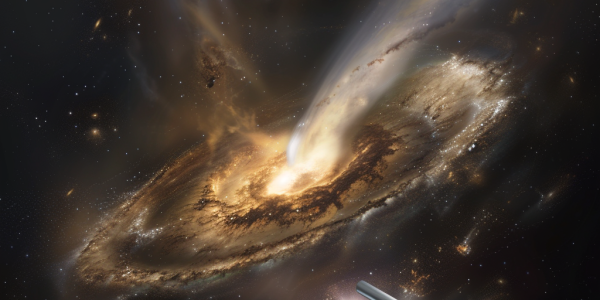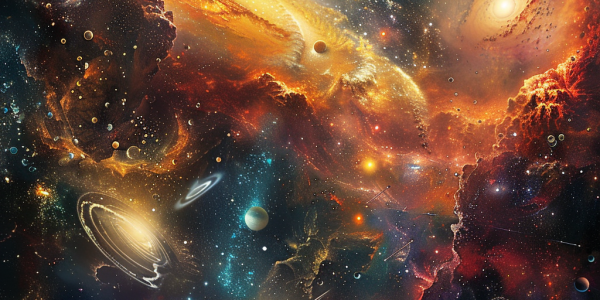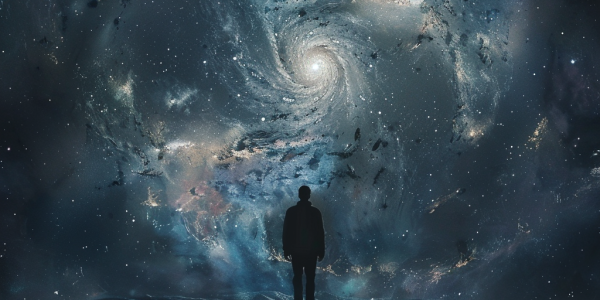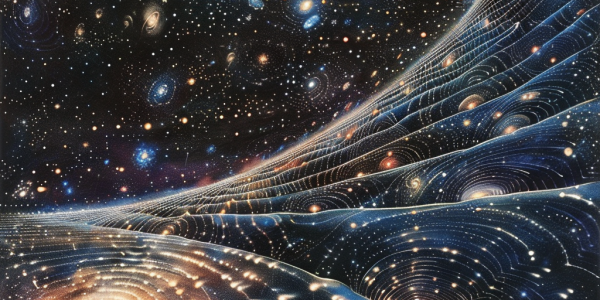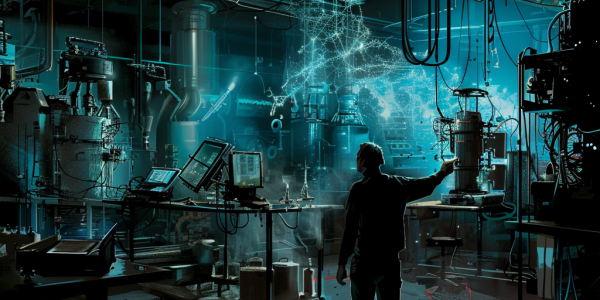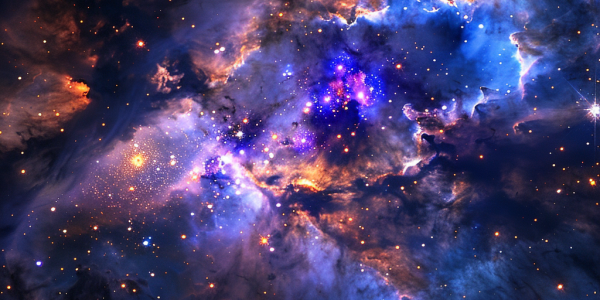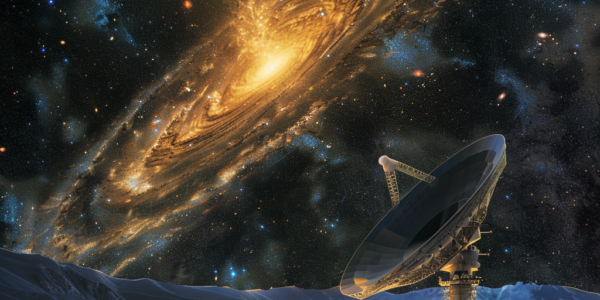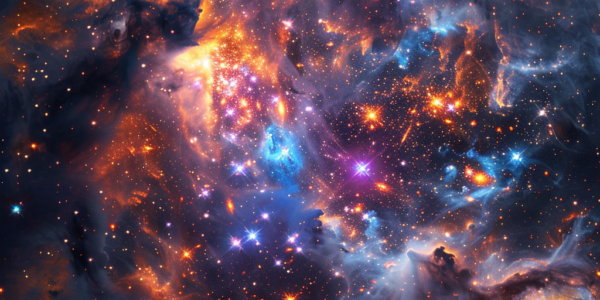New Theory On Why We Are Alone In The Cosmos—Tectonic Plates
New research suggests that the presence of oceans, continents, and plate tectonics on Earth may be the reason for the lack of evidence of advanced extraterrestrial civilizations. Geoscientists from the University of Texas at Dallas and the Swiss Federal Institute of Technology propose a change to the Drake Equation, emphasizing the importance of plate tectonics in the emergence of intelligent life.
Dramatic Quasar Interaction Revealed by INAF-Led Research Group
International research group led by INAF used NIRSpec on JWST to observe interaction between quasar and satellite galaxies in distant universe. Unprecedented details shed light on galaxy growth in early universe. Results presented at EAS 2024 meeting in Padua. Discovery impacts cosmic history and galaxies’ evolution.
NASA’s James Webb Space Telescope Discovers Ancient Stars and Massive Black Holes in Young Universe
NASA’s James Webb Space Telescope has made a groundbreaking discovery of ancient stars and massive supermassive black holes in the early universe, challenging existing theories of galaxy evolution and black hole formation. The findings, announced in Astrophysical Journal Letters, reveal objects dating back to 600–800 million years post-Big Bang, with stars hundreds of millions of years old and black holes 100 to 1,000 times larger than the one in our Milky Way.
Unraveling the Mystery of Dark Matter: New Insights from MIT Study
Scientists have been on a quest to unravel the mystery of dark matter, the enigmatic and invisible substance that makes up the majority of the universe’s mass. Despite stars, planets, and cosmic dust being observable, they do not suffice to elucidate the universe’s workings, leaving scientists to infer the existence of dark matter, a substance that remains elusive and does not interact with light. A recent study conducted by researchers from the Massachusetts Institute of Technology has reignited interest in the theory by shedding light on the composition of primordial black holes and potentially identifying a new category of exotic black holes, sparking excitement within the scientific community.
New Study Reveals Potential ‘Glitch’ in Einstein’s Theory of Relativity
A recent study unveils a ‘cosmic glitch’ in Einstein’s theory of relativity, challenging our understanding of gravity on cosmic scales. This unexpected finding could offer new insights into the universe’s mysteries, potentially reshaping established notions in astrophysics.
Dogged Dark Matter Hunters Find New Hiding Places to Check
New experiments are being conducted to search for ultra-lightweight particles as potential candidates for dark matter, as physicists move away from traditional WIMP and axion paradigms. Researchers believe that dark matter may not be simple and could consist of a variety of particles, challenging previous assumptions and theories.
James Webb Space Telescope Reveals Mesmerizing Image of Tumultuous Area in Space
The James Webb Space Telescope unveils a mesmerizing image of a tumultuous area near the center of our galaxy, 25,000 light years away. This image showcases never-before-seen features that have left astronomers puzzled. Launched in 2021, the telescope’s advanced capabilities allow it to observe the near-infrared spectrum, capturing objects previously undetectable by the Hubble Space Telescope. The recent image focuses on Sagittarius C, a region densely populated with stars and proto-stars, including a colossal proto-star exceeding 30 times the mass of our sun. Astronomers aim to test star formation theories and understand the composition of the universe. The image reveals enigmatic phenomena, such as a blue cloud of ionized hydrogen, sparking excitement among astronomers as they uncover the mysteries of space.
Event Horizon Telescope Aims to Capture First-Ever Black Hole Movie
The Event Horizon Telescope captured the first-ever image of a black hole five years ago, and now astronomers are attempting to create the first-ever movie of a black hole. More than 400 scientists are collaborating on this project, aiming to make the video by 2026. The appearance of black hole M87* changes over time, and EHT is working on capturing these changes to create a moving picture.
Cosmic Mystery: The Convergence of Universe’s Expansion Rate
The Hubble constant, which measures the rate of the universe’s expansion, has been a controversial number in cosmology for years. However, it seems that the two main methods of measuring the expansion rate are now converging, bringing us closer to resolving this cosmic mystery. Recent developments indicate that the further galaxies are from Earth, the faster they are moving away from us, with significant implications for our understanding of the universe and its evolution. These findings suggest that we may be on the brink of solving one of the most significant open questions in physics.
UC Berkeley to manage $300 million NASA mission to conduct first all-sky survey of ultraviolet sources in the cosmos
UC Berkeley has been selected to manage a $300 million NASA mission called UVEX (UltraViolet EXplorer) that is set to launch in 2030. The mission, led by the Space Sciences Laboratory (SSL) at UC Berkeley, will conduct the first all-sky survey of ultraviolet (UV) sources in the cosmos. The UVEX mission, headed by Fiona Harrison, a UC Berkeley Ph.D. recipient and professor of physics at the California Institute of Technology, aims to provide valuable insights into the evolution of galaxies and stars, both in the present and the distant past. This initiative is expected to complement other ongoing or planned surveys by other missions, including the optical and infrared Euclid mission led by the European Space Agency with NASA contributions, and NASA’s Nancy Grace Roman Space Telescope. According to Daniel Weisz, a science team leader for the UVEX mission and a UC Berkeley associate professor of astronomy, the launch of UVEX will mark the first time that the entire sky will be covered from the UV all the way through the infrared. This comprehensive coverage is considered groundbreaking, as ultraviolet emissions, which come from hot objects, are typically blocked by Earth’s atmosphere and must be studied from space. The survey will specifically focus on hot, massive blue stars, many of which are believed to be members of binary star systems, as well as exploding stars. UVEX will map the distribution of these ‘stripped’ stars in galaxies around the Milky Way. Additionally, the telescope will carry a UV spectrograph, jointly built by UC Berkeley and Caltech, to record detailed information about the UV wavelengths. With the ability to capture ultraviolet coverage of the entire sky, the UVEX mission is poised to provide groundbreaking insights into our understanding of galaxies, stars, and stellar explosions.


